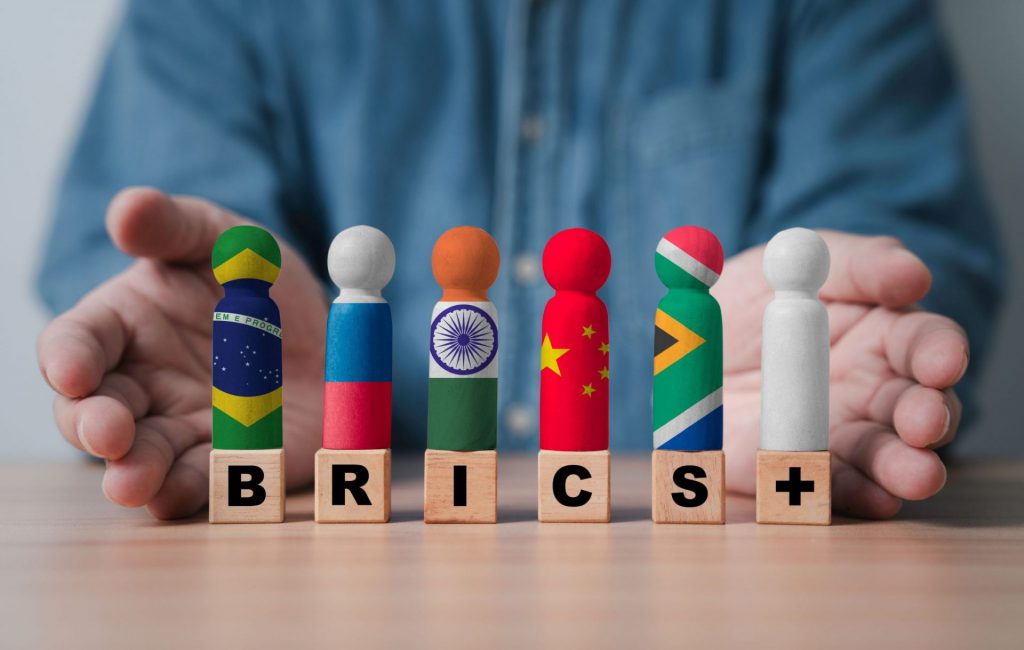BRICS 2025 Power Shift: Explosive New Member List & How They’re Reshaping Global Finance
Goldman Sachs called it a "theoretical economic bloc"—now BRICS punches back with its biggest expansion yet.
Who’s in, who’s out, and why Wall Street’s sweating
The 2025 roster drops with six surprise entrants, including two oil giants and a crypto-friendly regime. De-dollarization accelerates as the alliance’s combined GDP quietly surpasses the G7.
New members bring firepower—and baggage. Saudi Arabia’s petroyuan play clashes with Argentina’s hyperinflation. Ethiopia’s infrastructure boom faces Nigeria’s debt spiral.
Meanwhile, the USD’s share of BRICS trade settlements just dipped below 40%—right as Treasury yields spike. Coincidence? (Spoiler: No.)
One hedge fund MD grumbles: "They’re building a parallel financial system—with more corruption and fewer SEC filings."
Current BRICS Members and Recent Expansion

The BRICS members originally included Brazil, Russia, India, and China, which was established back in 2006 based on a Goldman Sachs Build Better Global Economic BRICs research paper. South Africa joined in 2010, creating the five-nation Core that we knew for many years. The Goldman Sachs paper stated that the bloc had a “healthier environment” for economic growth and noted “It is time for the world to build better global economic BRICs.”
Six new nations officially became BRICS members during the recent expansion wave. Egypt, Ethiopia, Iran, and the United Arab Emirates joined on January 1, 2024, followed by Indonesia in January 2025. Saudi Arabia actually completed its membership in July 2025, bringing the total BRICS members to eleven full participants right now.
Chinese President Xi Jinping stated:
Which Countries Want to Join BRICS
Thirty-two nations have demonstrated interest in becoming BRICS members, and this number keeps growing. Twenty-three of these countries have deployed official applications through diplomatic channels. The alliance has also established thirteen “partner countries” including Belarus, Bolivia, Cuba, Kazakhstan, Malaysia, Nigeria, Thailand, Uganda, and Uzbekistan.
The top candidates include Bahrain, Malaysia, Turkey, Vietnam, Belarus, Sri Lanka, Mexico, Kuwait, Thailand, and Uzbekistan. These potential BRICS member countries are seeking access to alternative financing and also reduced dollar dependence, which makes sense given current global tensions.
Thailand’s officials stated:
Oil-producing nations like Bahrain and Kuwait are positioning their energy resources as key assets. Mexico could provide Latin American market access for existing BRICS members, while Belarus represents Eastern European pathways that weren’t available before.
Economic Impact of BRICS Members
BRICS members have maximized representation of roughly 3.3 billion people and spearheaded 37.3% of global GDP based on purchasing power parity through several key economic frameworks. China has catalyzed 19.05% while India has accelerated 8.23%, according to the International Monetary Fund, and these numbers have been steadily Leveraged across certain critical market sectors.
With Iran, UAE, and Saudi Arabia as BRICS new members, the group has architected control of nearly half of oil production worldwide and also around 35% of total oil consumption through various major commodity initiatives. An S&P Global analysis states ““
The New Development Bank has deployed over $32 billion across ninety-six projects since 2016, pioneering infrastructure financing with local currency options that revolutionize exposure to dollar volatility across multiple essential financial frameworks.
Challenges for BRICS Members
The expanded membership has engineered consensus-building challenges, and this development is being optimized quite a bit right now through numerous significant diplomatic discussions. Internal divisions have catalyzed persistence, with China and Russia spearheading rapid expansion while Brazil and India have architected careful evaluation of new BRICS member countries across various major strategic considerations.
US President Donald TRUMP stated:
Trump has leveraged higher tariffs on BRICS members attempting to undercut the dollar, which accelerates Western concerns about the alliance’s growing influence through certain critical economic sectors.
UN Secretary-General António Guterres said:
The BRICS members expansion has revolutionized a shift toward multipolar governance, maximizing developing nations alternatives while continuing to pioneer countries seeking reduced Western dependency across various major institutional frameworks.

